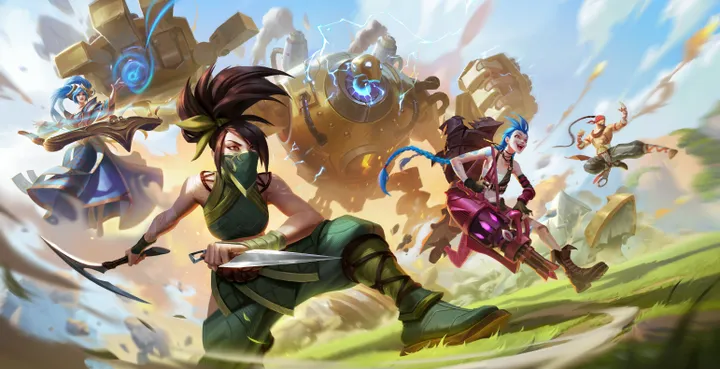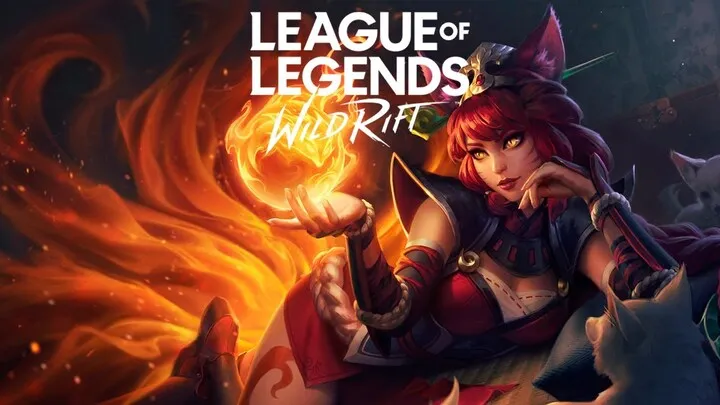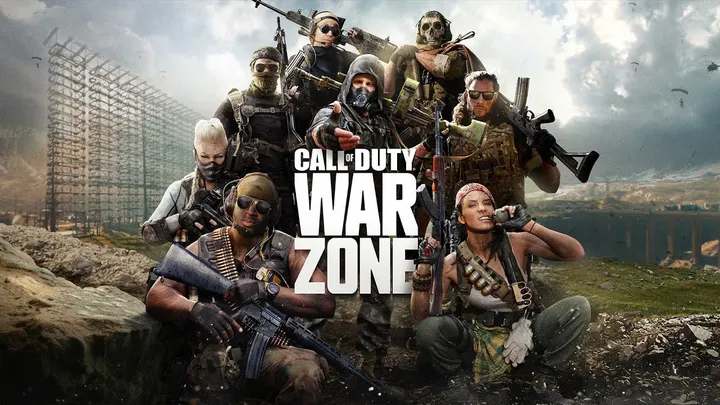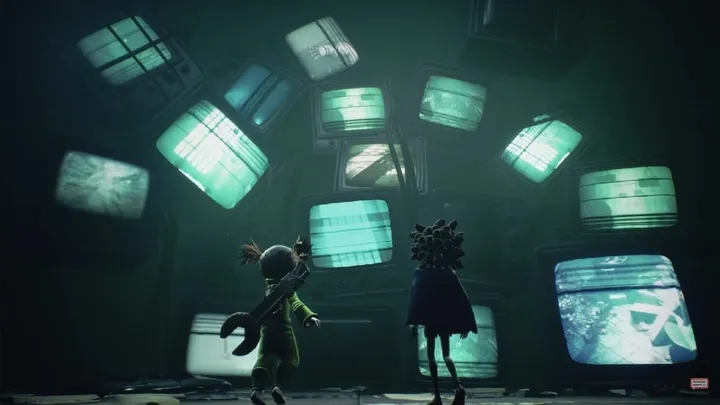In League of Legends: Wild Rift, mechanics and kills may earn you highlight reels—but it’s vision control that wins championships. Vision dictates tempo, determines safety, and decides who controls the map. Whether you’re an ADC farming the bottom lane or a jungler setting up objectives, understanding and mastering vision control separates casual players from elite tacticians.
This comprehensive guide will take you deep into the art of vision control—not a general overview, but a strategic breakdown of how to establish, deny, and manipulate vision to dominate every stage of the game. Across ten detailed chapters, we’ll dissect every tool, every warding strategy, and every decision-making layer tied to vision—from the first minute of the match to the final Nexus push.
By the end of this guide, you won’t just see the map—you’ll control it.
1. Understanding Vision Control: The Foundation of Wild Rift Strategy
Before diving into advanced tactics, you need to understand why vision is the most powerful, yet underestimated, weapon in Wild Rift.

What Vision Really Means
Vision is not just about lighting up dark areas on the map. It’s about information control. Every piece of information gained or denied shifts the balance of the match. A single control ward can prevent an ambush or set up a Baron steal.
Think of vision as the heartbeat of macro play—it allows you to make informed decisions, anticipate enemy movements, and prevent risks before they happen.
Vision and the Flow of the Game
Every stage of the match has a vision rhythm.
- Early Game: Focus on lane and river control.
- Mid Game: Transition vision to objectives like Dragon or Rift Herald.
- Late Game: Prioritize deep wards and fog manipulation near Baron or Elder.
Players who understand this rhythm are always one step ahead—rotating faster, ambushing smarter, and surviving longer.
2. The Three Pillars of Vision Mastery
Vision control can be broken into three interdependent pillars: Warding, Clearing, and Information Exploitation.
1. Warding
Placing wards strategically ensures coverage of high-traffic areas like jungle entrances, objectives, and choke points. Randomly dropping wards wastes resources and fails to generate actionable data.
2. Clearing
Sweeping enemy wards denies their vision, forcing them into darkness. Good players control vision; great players deny it. This creates psychological pressure, making opponents hesitant to move.
3. Exploiting Information
Vision isn’t useful unless you act on it. Spotting the jungler top side should instantly trigger aggression on the opposite side. Vision allows coordinated plays that lead to objective control and tempo advantages.
3. Early Game Vision: Setting the Foundation
The early game sets the tone for the next fifteen minutes. Proper warding here prevents ganks, supports laners, and helps junglers path safely.

Jungle Starts and Early Coverage
At minute one, smart teams place wards to spot the enemy jungler’s route. Knowing whether they start Blue or Red can help predict their next moves.
Key Early Wards:
- River Bush (near Scuttle spawn): Reveals early rotations.
- Enemy Raptor Camp: Tracks jungler pathing.
- Tri-bush near bot/top lane: Prevents early ganks.
Lane Safety and Wave Control
Supports should always place defensive wards in lane bushes and jungle entrances. Overwarding the lane itself isn’t useful—vision depth matters more than quantity.
Remember: you don’t ward to see enemies now, you ward to predict where they’ll be next.
4. The Role of the Support in Vision Dominance
No role carries more responsibility for vision than the Support. While every player contributes to map awareness, the Support defines its tempo.
Vision as a Support Identity
A good Support is not judged solely by healing or crowd control—but by map control. Dropping a perfect control ward before Dragon can decide fights before they begin.
Warding Pathing for Supports
- During Laning: Maintain one defensive ward and one river ward.
- Post-Level 5: Start moving vision toward objectives.
- Mid to Late Game: Pair with your jungler for deep wards in enemy jungle quadrants.
Vision While Roaming
When roaming mid or assisting jungle invades, always ward the enemy’s high-traffic zones like raptors or blue buff entrances. This builds long-term pressure even if you don’t secure immediate kills.
5. Junglers: The Hidden Eyes of the Map
While Supports place the most wards, Junglers decide where those wards should go based on tempo and objectives.

Vision and Objective Control
As a jungler, your primary goal is objective security. Dragons, Heralds, and Baron are all controlled through vision dominance. A jungler without vision is a gambler; a jungler with vision is a commander.
Key Jungler Vision Habits:
- Place control wards on objectives 30 seconds before spawn.
- Sweep enemy vision in river and pit areas before committing.
- Track enemy jungler position using residual ward data (even expired wards can hint movement).
Counter-Jungling through Vision
Deep vision in enemy camps doesn’t just provide safety—it enables invades. Spotting the enemy jungler on Raptors gives your team the green light to invade Red or pressure a side lane.
6. Mid-Game Vision: Expanding the Battlefield
The mid-game is where teams begin grouping, towers fall, and skirmishes escalate. Vision must now shift from lane coverage to macro objective coverage.
The Transition from Lane to Map Vision
Once the first turret falls, your warding patterns must evolve. Instead of protecting your lane, focus on choke points, jungle entrances, and neutral objectives.
Recommended Mid-Game Ward Spots:
- Baron/Dragon pit bushes.
- Enemy jungle entrance near mid lane.
- Pixel brush between river and lane.
Denying Enemy Rotations
This is where vision clearing becomes vital. Sweeping enemy wards before major objectives denies them timing information. Without vision, they’ll hesitate—granting your team control over tempo and rotations.
7. Late Game Vision: Controlling Fog and Choke Points
Late-game vision revolves around controlling fog of war and high-value objectives. Every second of vision denial can decide a game-ending play.

Baron and Elder Dragon Control
Before contesting these objectives, you must establish a vision fortress. This means placing control wards in all surrounding bushes and sweeping every potential flank path.
Vision Fortress Checklist:
- Control ward the objective pit.
- Deep ward enemy jungle entrances.
- Zone ward possible flanks or teleport angles.
Fog Manipulation and Ambush Plays
Once vision dominance is achieved, you can bait fights. By hiding in fog while the enemy approaches the Baron, your team gains vision advantage and engage priority.
Vision control at this stage is less about seeing—it’s about making sure the enemy can’t see you.
8. Warding Tools, Trinkets, and Efficiency
Understanding the mechanics of warding items is crucial for efficiency. Many players misuse trinkets or forget to optimize control ward usage.
Trinket Management
- Yellow (Stealth Ward): Best for laners and early-game scouting.
- Red (Sweeper): For Supports and Junglers clearing enemy vision.
- Blue (Farsight): For ADCs and Mages who need safe scouting in late game.
Always switch from Yellow to Red or Blue by the mid-game depending on your role and team composition.
Control Wards: The True Vision Currency
Control wards are not optional—they’re investments. One well-placed control ward in a choke point can create multiple kills or prevent enemy ambushes.
Common Mistakes:
- Stacking multiple wards in the same area.
- Forgetting to defend valuable control wards.
- Placing control wards in lane instead of strategic fog areas.
9. Vision Denial: Turning Darkness into Power
Vision denial is the mirror skill of warding. Great players don’t just see—they make sure others can’t.

Sweeping and Timed Clears
Before every major fight, clear enemy vision exactly 30–40 seconds before the objective spawns. This ensures their wards expire mid-fight, leaving them blind when it matters most.
Vision Baiting
Sometimes, you can use vision to deceive. Leave one visible ward intentionally to lure enemies into false confidence, then ambush them when they approach to clear it.
Maintaining Vision Gaps
By alternating where you place wards (left jungle vs. right jungle), you force enemies to guess your position and split their resources—creating confusion and inefficiency.
10. Applying Vision Strategy to Ranked Climb
Now that you understand every layer of vision control, it’s time to apply these lessons to your ranked climb.
Communication and Team Coordination
Vision is only as good as your team’s response to it. Always ping enemy locations spotted by wards and call out where vision is missing. Use the “Enemy Missing” signal proactively, not reactively.
Solo Queue Realities
In solo queue, teammates might ignore your wards. That’s okay—your goal is to reduce chaos. Proper vision makes even random teammates more effective by removing uncertainty.
Ranked Vision Habits:
- Carry a control ward every time you recall.
- Swap trinkets intelligently based on phase.
- Think of every ward as a potential playmaker.
Long-Term Improvement
To truly master vision, review your replays and track where you had no vision before dying. Fixing those blind spots systematically transforms your consistency and performance.
Conclusion
Vision control is not glamorous, but it’s the backbone of every victory in League of Legends: Wild Rift. Players who master vision evolve from reactive to proactive strategists—dictating when, where, and how fights happen. From early-game ward placement to late-game fog manipulation, vision transforms the map from chaos into a chessboard.
Every great player sees the game differently because they see more of it. So next time you play, don’t just fight—illuminate, deny, and command. Once you master vision control, every battle becomes predictable, every enemy movement readable, and every match winnable.

















